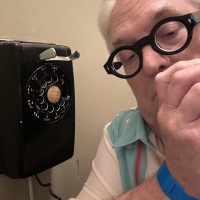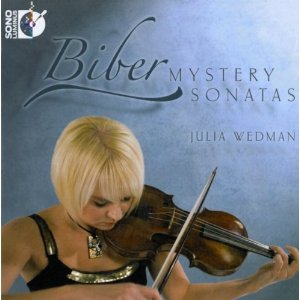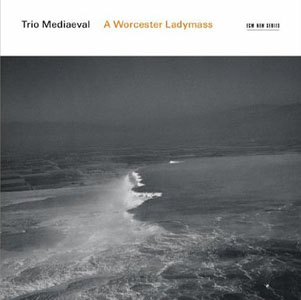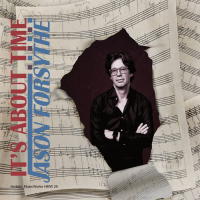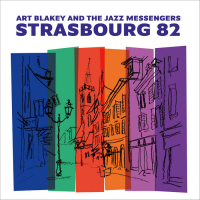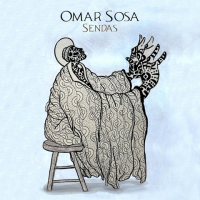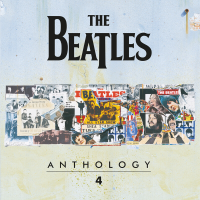Home » Jazz Articles » Album Review » Julia Wedman: Biber - Mystery Sonatas
Julia Wedman: Biber - Mystery Sonatas
The popularity of these pieces is supported by their recording history in the past 25 years. Notable recordings of the "Mystery Sonatas" include those by Goebel, Musica Antiqua, Koln (Archiv, 1991), Lautenbacher, et al. (Vox Box, 1996), Davitt Moroney and Tragicomedy (Veritas, 2002) and Andrew Manse (Harmonia Mundi, 2004). This set is by Canadian Baroque specialist Julia Wedman, and what a youthful tour de force it is.
Wedman is a member of several notable Canadian ensembles, including Tafelmusick, The Knights, the Ebyler String Quartet and I Furiosi. She has had an exponential rise in attention and popularity, over the past number of years, because of her association with these groups and this new solo outing can do nothing but bolster her already rapid ascent.
Biber conceived these sonatas as meditations on the Joyful, Sorrowful and Glorious mysteries of the Roman Catholic Rosary. A deeply spiritual man, Biber imbued these compositions with the requirement of a high level of musical accomplishment to match their spiritual exigence. Biber accomplished this with his deliberate and thoughtful composing. Only the first and last sonatas are composed for the violin in standard tuning (G-D-A-E). The remaining 14 sonatas employ various degrees of scordatura (or cross-tuning, not unlike what is done with slide guitar). This tuning technique allows for otherwise impossible note sequences to be played. The effect is one of sharpening, and giving greater definition to the performed pieces.
Wedman, joined by I Furiosi cellist Felix Deak, Tafelmusic keyboardist Charlotte Nediger, harpist Julia Seager Scott and theorboist Lucas Harris, produces an amazingly warm and modern performance of the pieces, one universally well-defined with a prism's precision. Wedman's navigation of Biber's tricky double-stops lend the necessary drama to these Baroque prayers. Nediger's harpsichord is crisp, without being harsh like earlier period instrument recordings. Her organ sound is ancient and stately on Sonata No. 5 "Finding the 12-year Old Jesus in the Temple," and Sonata No. 15 "The Coronation of Mary in Heaven."
The continuo is provided by cellist Deak who rises to the challenge, alternating between Baroque cello and viola da gamba. It is the continuo that provides the unifying drone in small ensemble Baroque playing, serving to flesh out the silent parts and give gravity to the more complex sections. The sum of effects is one of throwing open the windows and airing these pieces out, effectively instilling a compelling vibrancy and character fit for such spiritual considerations.
Track Listing
CD1: The Joyful Mysteries: Sonata No. 1 "The Annunciation;" Sonata No. 2 "The Visitation;" Sonata No.3 "The Nativity;" Sonata No. 4 "The Presentation of the Infant Jesus in the Temple;" Sonata No. 5 "Finding the 12-year Old Jesus in the Temple." The Sorrowful Mysteries: Sonata No. 6 "The Agony in the Garden;" Sonata No. 7 "The Scourging at the Pillar;" Sonata No.8 "The Crowning with Thorns;" Sonata No. 9 "Jesus Carrying the Cross;" Sonata No. 10 "The Crucifixion." CD2: The Glorious Mysteries: Sonata No. 11 "The Resurrection;" Sonata No. 12 "The Ascension;" Sonata No. 13 "Pentecost;" Sonata No. 14 "The Assumption of Mary Into Heaven;" Sonata No. 15 "The Coronation of Mary in Heaven."
Personnel
Julia Wedman: violin (Hendrick Jacobs, Amsterdam, 1694); Felix Deak: cello, viola de gamba; Lucas Harris: theorbo, archlute; Charlotte Nediger: organ, harpsicord; Julia Seager Scott: harp.
Album information
Title: Biber - Mystery Sonatas | Year Released: 2011 | Record Label: Sono Luminus
Tags
PREVIOUS / NEXT
Support All About Jazz
 All About Jazz has been a pillar of jazz since 1995, championing it as an art form and, more importantly, supporting the musicians who make it. Our enduring commitment has made "AAJ" one of the most culturally important websites of its kind, read by hundreds of thousands of fans, musicians and industry figures every month.
All About Jazz has been a pillar of jazz since 1995, championing it as an art form and, more importantly, supporting the musicians who make it. Our enduring commitment has made "AAJ" one of the most culturally important websites of its kind, read by hundreds of thousands of fans, musicians and industry figures every month.

